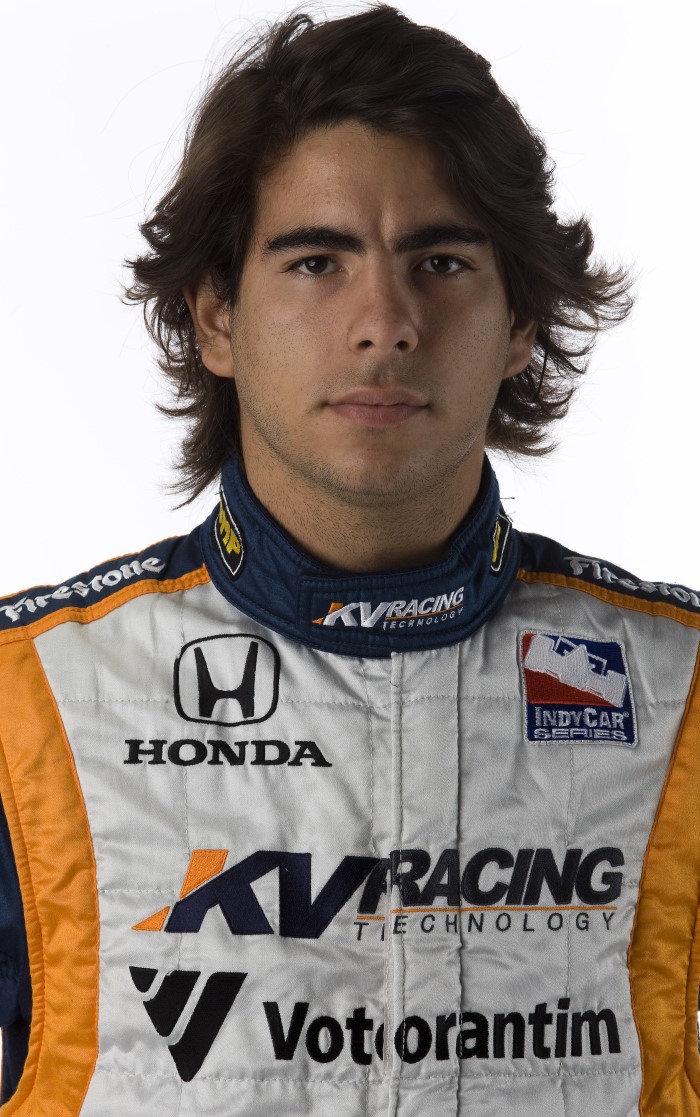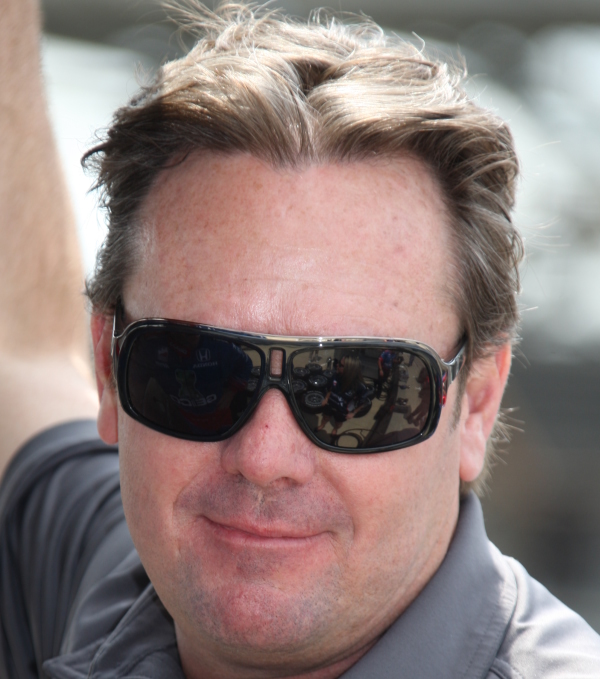Will Moraes and KV Racing pull an upset in Indy 500?
 |
| Mario Moraes |
When you first meet him he strikes you as quiet, polite and mild mannered, but when he gets behind the wheel of an IndyCar, he's as ferocious as they get. Not much has been written about the 7th place starting spot for KV Racing Technology’s Mario Moraes in this year's Indy 500.
This unknown kid, twenty years old from a second year team, split the Penske cars and Andretti cars in qualifying for the biggest race in the world.
He is the new generation of racer – fast, modest, good looking and a heartthrob for all the girls who see him.
When you mention 'Mario' at the Indy Speedway, everyone thinks of the great Mario Andretti. This Mario is from Brazil, not Italy, and he came onto the American racing scene from Brazil by the way of Europe, with the Dale Coyne Racing team in 2008 where he was teamed with fellow Brazilian Bruno Junqueira. He slipped in under the radar screen but immediately made his mark felt, sometimes outrunning his more experienced teammate.
This past Saturday Moraes, #5 KV Racing Technology – Votorantim Honda/Dallara/Firestone, made two qualifying runs. The first attempt occurred just after the start of qualifying at 12:00 noon with Moraes posting a four-lap average of 222.470 mph. His initial attempt put him squarely in the top-11 until the final 15 minutes of qualifying, which concluded at 6:00 p.m. After getting bumped out of the top-11, Moraes made a second qualifying attempt and had a fantastic run recording an average speed of 223.331 mph. He will start the 2009 Indy 500 on the inside of Row #3.
 |
| Mario Moraes is new to oval racing but you would not know it based on his performance on the track. Here he races under Danica Patrick at Kansas |
“I want to thank the whole KV Racing – Votorantim team. They did a great job today and I am very happy with our qualifying position," said Moraes.
Coming from British F3 to the biggest race in the world, how much pressure was on you last Saturday to have to re-qualify the car?
“During the first qualifying run we were a little conservative because of the wind. We added a lot of downforce which slowed the car, but still had a good qualifying run and were in ninth going into the afternoon. We did some practice laps in the late afternoon, with less downforce and knew that we could run faster.
 |
| Jimmy Vasser |
"Jimmy [Vasser] was a little hesitant about trying again but I told him, don't worry about it, the car felt good and I thought we should go again because there was more speed in the car.
"Then we got bumped out of the top-11, and the decision was made for us, so we went back out with the less downforce setup and had a really good second qualifying run."
Moraes will be contesting his second Indianapolis 500 and 12th race on an oval. The 20-year-old Brazilian, the second youngest driver in the series, made his IMS debut last year qualifying 28th for Dale Coyne Racing and finishing 18th.
In 11 previous oval events driving for underdog teams (Dale Coyne Racing and KV Racing Technology), Moraes has a best finish of 10th last year in Nashville (career best finish is seventh on the Watkins Glen road course also in 2008).
The big IRL teams have made many small changes over the years to improve their cars on ovals, and even Will Power commented how easy it was to go fast in a Penske car. To some extent the driver can only do so much to get more speed out of the car at Indy.
With the cars at full throttle the entire lap on the fast, flat Indy oval, the only thing slowing the car down is wind resistance, so to go faster usually means reducing drag by laying the wings down flat. This reduces downforce, which means the cars are not as planted in the corners, and this is where the best drivers come in – able to keep a loose race car on knifes edge for 500 miles without putting it into the wall.
And his KV Racing Technology team has their job to do as well. Not only must they adjust race strategy as events unfold, choosing the optimum pit strategy of how many stops to make and when to make them is crucial in having a successful race. It is also important for them to take competitors' strategies into account when planning pit stops, to avoid being "held up" behind other cars and unable to overtake them.
"It is only my second time here and my team is not the biggest team in the field, so yes, it feels good to beat some of those guys.
"We now have to focus on race setup but it's raining and it might rain the rest of the week, so it is cutting back on our running time."
"The good news is that it is great to have a 2nd car on the team. I have a teammate now (Paul Tracy) and we can share data and work on some different setups to see if we can find the best balance for race day. We can compare lap segment times to see where he is faster and where I am faster and try to improve both cars.
"Paul is a great driver and he has a lot of experience. I try to learn as much as I can each day from him. I like watching how he works at the track."
For a guy who cut his teeth on road courses in Brazil and Europe, Moraes has adapted to oval tracks quite well.
"We surprised more than a few people in qualifying and we are working hard to surprise them even more on race day."
 |
| Kevin Kalkhoven |
Like his team owners Kevin Kalkhoven and Jimmy Vasser who don't seek the spotlight, Moraes expects to have his small cheering section (a few family and friends) at the race on May 24th. Should he pull off perhaps the biggest upset in the history of the Indy 500, don't expect this very unassuming, modest youngster to be climbing any fences like a monkey or doing donuts on the track.
Just shocking 250,000 astounded fans at the track and millions on TV worldwide will be satisfaction enough.
